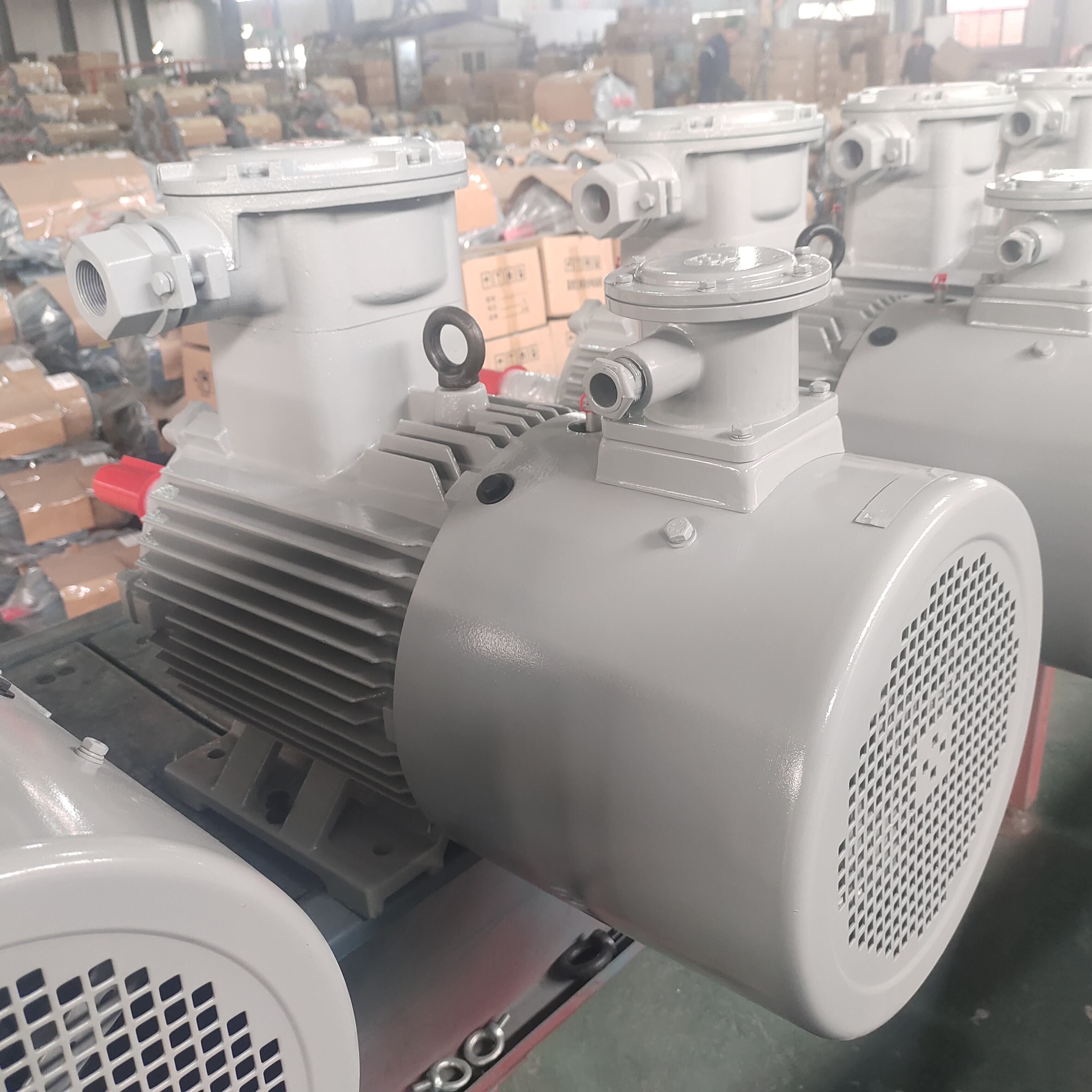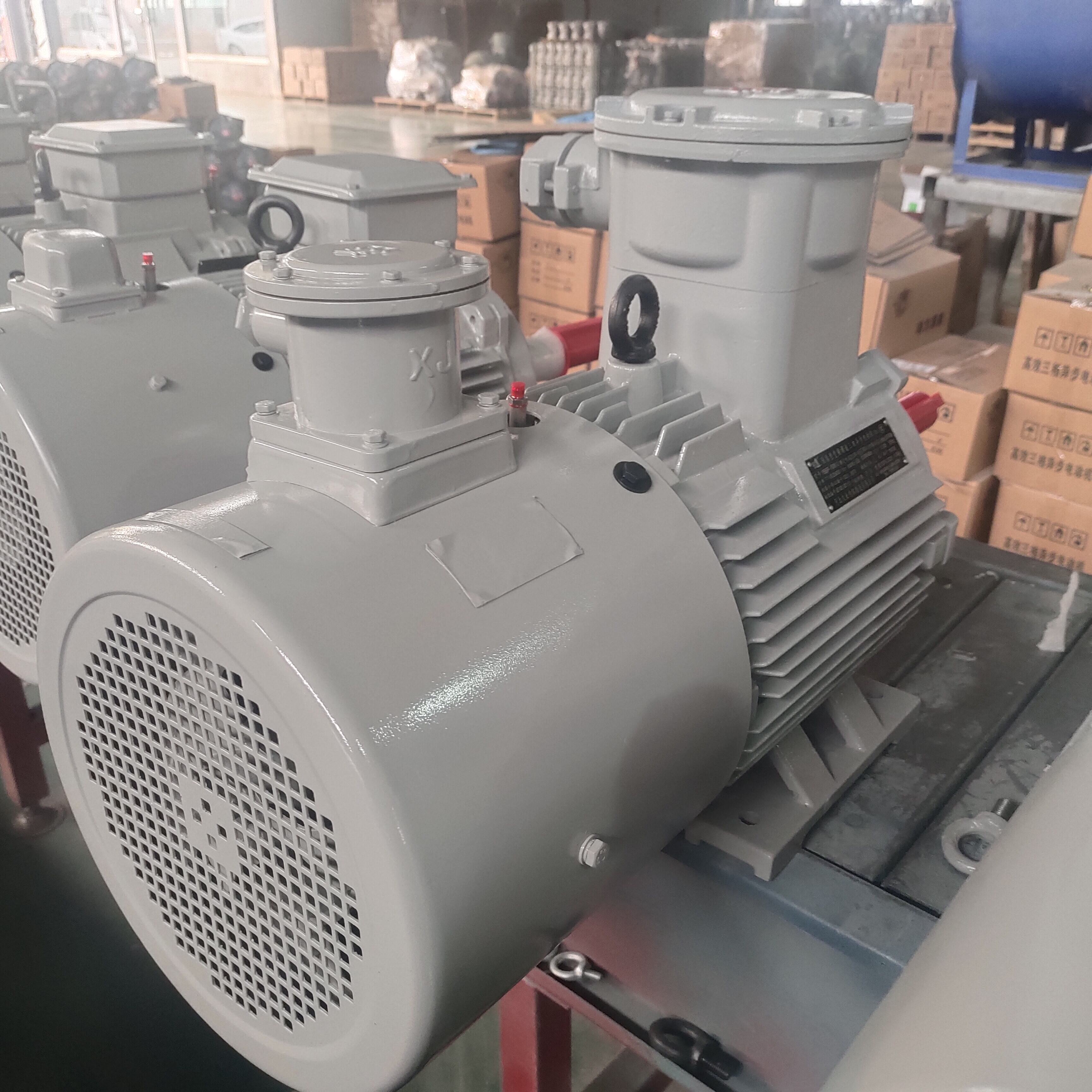Understanding the Evolution of Motor Control Technology
The industrial landscape has witnessed remarkable transformations in motor control systems, with variable frequency motors emerging as a cornerstone of modern automation. These sophisticated devices have revolutionized how we approach power management, speed control, and energy efficiency across numerous applications. From manufacturing plants to HVAC systems, variable frequency motors have become indispensable components that drive innovation and operational excellence.
As we approach 2025, the technology behind variable frequency motors continues to advance, offering enhanced capabilities and smarter control mechanisms. This comprehensive guide explores the fundamental principles, applications, and future trends that make these motors an essential part of industrial and commercial operations.
Core Components and Operating Principles
Essential Components of Variable Frequency Systems
At the heart of every variable frequency motor system lies a sophisticated arrangement of components working in harmony. The primary elements include the motor itself, typically an AC induction type, a variable frequency drive (VFD) controller, and various feedback mechanisms. The controller processes input signals and adjusts the frequency of electrical power supplied to the motor, enabling precise speed and torque control.
Modern variable frequency motor installations also incorporate advanced sensors, monitoring systems, and protective devices. These components ensure optimal performance while safeguarding the system against potential issues like overcurrent, overheating, or mechanical stress.
Understanding Frequency-Speed Relationships
The fundamental principle behind variable frequency motor operation lies in the direct relationship between electrical frequency and motor speed. By modifying the frequency of the power supply, operators can achieve seamless speed control without sacrificing torque capabilities. This relationship follows a linear pattern, where changes in frequency correspond proportionally to changes in motor speed.
Advanced control algorithms within modern variable frequency systems can maintain optimal voltage-to-frequency ratios throughout the speed range, ensuring consistent performance and energy efficiency. This sophisticated control mechanism allows for precise speed adjustments while protecting the motor from harmful operating conditions.

Applications Across Industries
Manufacturing and Production Lines
The manufacturing sector has embraced variable frequency motors as essential components in production line automation. These systems enable precise control of conveyor belts, assembly line components, and processing equipment. The ability to adjust motor speeds on the fly helps optimize production rates while maintaining product quality and reducing wear on mechanical components.
In metal processing facilities, variable frequency motors control the speed of rolling mills, ensuring consistent material thickness and surface quality. Similarly, in packaging operations, these motors enable smooth acceleration and deceleration of conveyor systems, preventing product damage and improving overall efficiency.
HVAC and Building Systems
Building automation systems rely heavily on variable frequency motors to maintain optimal comfort levels while maximizing energy efficiency. These motors control air handlers, pumps, and ventilation systems, adjusting their operation based on real-time demand. The result is improved indoor air quality and significant energy savings compared to traditional fixed-speed systems.
Modern smart buildings leverage the capabilities of variable frequency motors to implement sophisticated control strategies. By integrating these motors with building management systems, facility managers can implement demand-based ventilation, optimize pump operations, and reduce overall energy consumption.
Energy Efficiency and Cost Benefits
Power Consumption Optimization
One of the most compelling advantages of variable frequency motors is their ability to significantly reduce energy consumption. Unlike traditional motors that operate at fixed speeds, these systems can modulate their output based on actual demand. This capability translates into substantial energy savings, particularly in applications with varying load requirements.
Studies have shown that implementing variable frequency motors can result in energy savings of 30-50% compared to conventional motor systems. The ability to operate at reduced speeds during periods of low demand contributes significantly to these savings, making these motors an attractive option for organizations focused on sustainability and cost reduction.
Maintenance and Lifecycle Advantages
Variable frequency motors offer significant benefits in terms of maintenance requirements and equipment longevity. The soft start capabilities inherent in these systems reduce mechanical stress during motor startup, leading to decreased wear on bearings, belts, and other components. This characteristic extends equipment life and reduces maintenance costs over time.
Additionally, modern variable frequency motor systems include advanced diagnostic capabilities that enable predictive maintenance approaches. By monitoring key parameters such as current draw, temperature, and vibration levels, maintenance teams can address potential issues before they lead to equipment failure.
Future Trends and Innovations
Integration with Smart Technologies
The future of variable frequency motors is closely tied to developments in smart manufacturing and Industry 4.0. Enhanced connectivity features allow these motors to communicate with other systems, enabling real-time optimization and automated decision-making. The integration of artificial intelligence and machine learning algorithms is expected to further improve motor performance and efficiency.
Emerging technologies such as digital twins and advanced analytics are being incorporated into variable frequency motor systems, providing unprecedented levels of insight into motor operation and performance. These capabilities enable predictive maintenance strategies and optimization of motor parameters based on historical data and operating patterns.
Sustainable Development Impact
As environmental considerations become increasingly important, variable frequency motors are playing a crucial role in sustainable industrial development. Manufacturers are focusing on developing more efficient motors using advanced materials and improved design techniques. The integration of renewable energy sources with variable frequency motor systems is also gaining traction, particularly in applications requiring variable speed control.
The development of new control algorithms and power electronics continues to push the boundaries of what's possible with variable frequency motors. These advances promise even greater energy efficiency and performance improvements in the coming years.
Frequently Asked Questions
What makes variable frequency motors more efficient than traditional motors?
Variable frequency motors achieve higher efficiency through their ability to adjust speed and power consumption based on actual demand. This dynamic control eliminates the energy waste associated with fixed-speed operation and reduces mechanical stress during startups, resulting in significant energy savings and extended equipment life.
How do variable frequency motors handle different load conditions?
These motors utilize sophisticated control algorithms to maintain optimal performance across varying load conditions. The variable frequency drive adjusts both frequency and voltage to match the load requirements, ensuring efficient operation whether the system is running at full capacity or partial load.
What maintenance considerations are important for variable frequency motors?
Regular maintenance for variable frequency motors should include monitoring of electrical parameters, bearing condition assessment, and cooling system inspection. It's also important to keep the control electronics clean and well-ventilated, and to periodically check for signs of wear or deterioration in power cables and connections.


